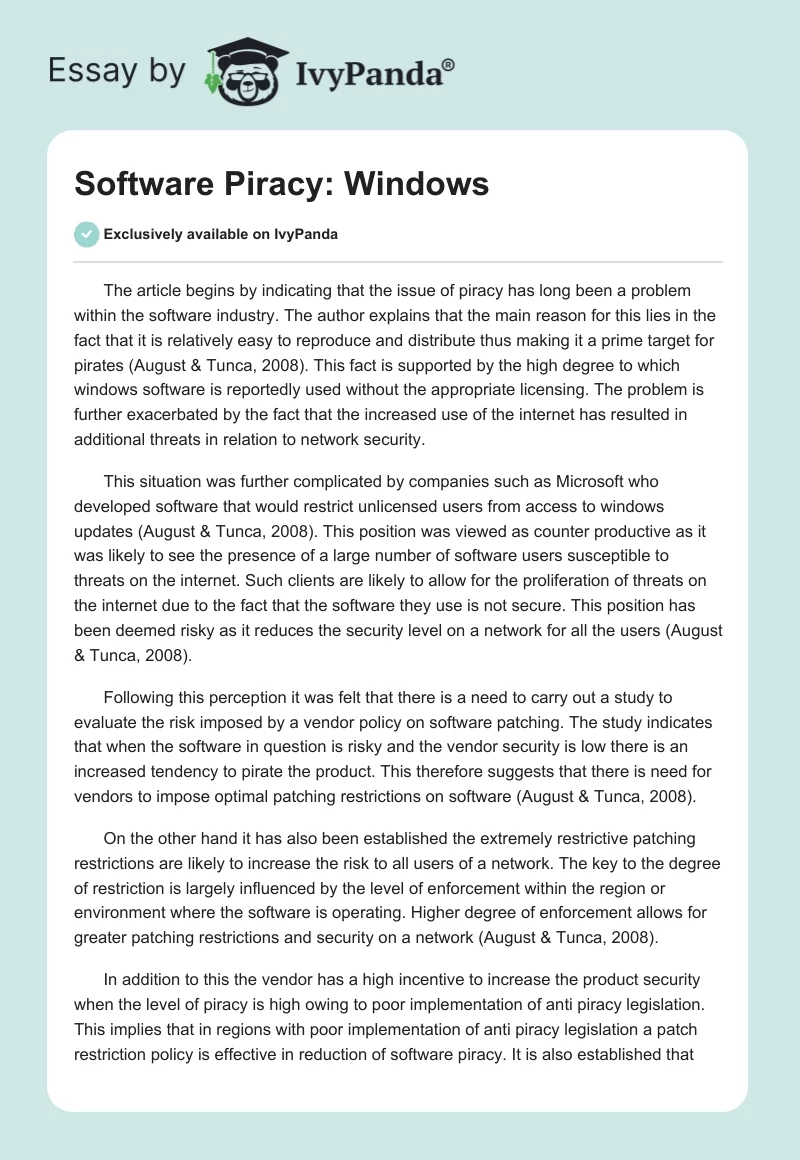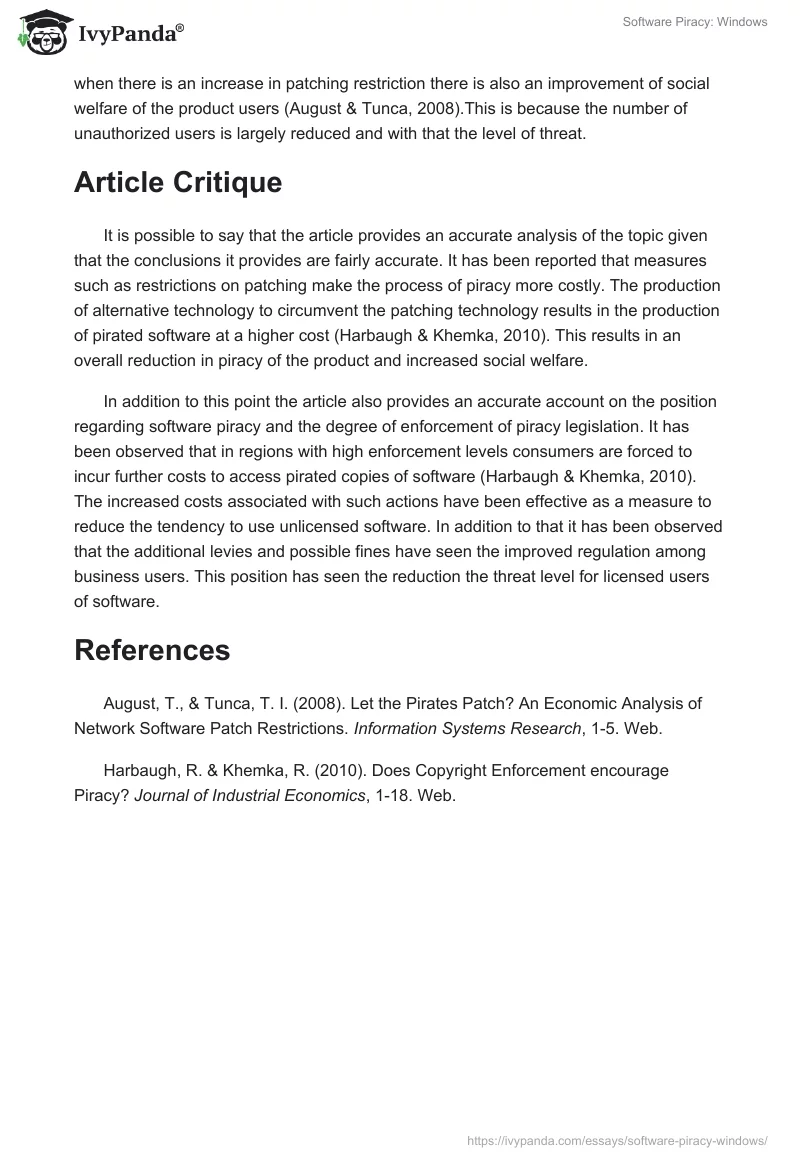The article begins by indicating that the issue of piracy has long been a problem within the software industry. The author explains that the main reason for this lies in the fact that it is relatively easy to reproduce and distribute thus making it a prime target for pirates (August & Tunca, 2008). This fact is supported by the high degree to which windows software is reportedly used without the appropriate licensing. The problem is further exacerbated by the fact that the increased use of the internet has resulted in additional threats in relation to network security.
This situation was further complicated by companies such as Microsoft who developed software that would restrict unlicensed users from access to windows updates (August & Tunca, 2008). This position was viewed as counter productive as it was likely to see the presence of a large number of software users susceptible to threats on the internet. Such clients are likely to allow for the proliferation of threats on the internet due to the fact that the software they use is not secure. This position has been deemed risky as it reduces the security level on a network for all the users (August & Tunca, 2008).
Following this perception it was felt that there is a need to carry out a study to evaluate the risk imposed by a vendor policy on software patching. The study indicates that when the software in question is risky and the vendor security is low there is an increased tendency to pirate the product. This therefore suggests that there is need for vendors to impose optimal patching restrictions on software (August & Tunca, 2008).
On the other hand it has also been established the extremely restrictive patching restrictions are likely to increase the risk to all users of a network. The key to the degree of restriction is largely influenced by the level of enforcement within the region or environment where the software is operating. Higher degree of enforcement allows for greater patching restrictions and security on a network (August & Tunca, 2008).
In addition to this the vendor has a high incentive to increase the product security when the level of piracy is high owing to poor implementation of anti piracy legislation. This implies that in regions with poor implementation of anti piracy legislation a patch restriction policy is effective in reduction of software piracy. It is also established that when there is an increase in patching restriction there is also an improvement of social welfare of the product users (August & Tunca, 2008).This is because the number of unauthorized users is largely reduced and with that the level of threat.
Article Critique
It is possible to say that the article provides an accurate analysis of the topic given that the conclusions it provides are fairly accurate. It has been reported that measures such as restrictions on patching make the process of piracy more costly. The production of alternative technology to circumvent the patching technology results in the production of pirated software at a higher cost (Harbaugh & Khemka, 2010). This results in an overall reduction in piracy of the product and increased social welfare.
In addition to this point the article also provides an accurate account on the position regarding software piracy and the degree of enforcement of piracy legislation. It has been observed that in regions with high enforcement levels consumers are forced to incur further costs to access pirated copies of software (Harbaugh & Khemka, 2010). The increased costs associated with such actions have been effective as a measure to reduce the tendency to use unlicensed software. In addition to that it has been observed that the additional levies and possible fines have seen the improved regulation among business users. This position has seen the reduction the threat level for licensed users of software.
References
August, T., & Tunca, T. I. (2008). Let the Pirates Patch? An Economic Analysis of Network Software Patch Restrictions. Information Systems Research, 1-5. Web.
Harbaugh, R. & Khemka, R. (2010). Does Copyright Enforcement encourage Piracy? Journal of Industrial Economics, 1-18. Web.


